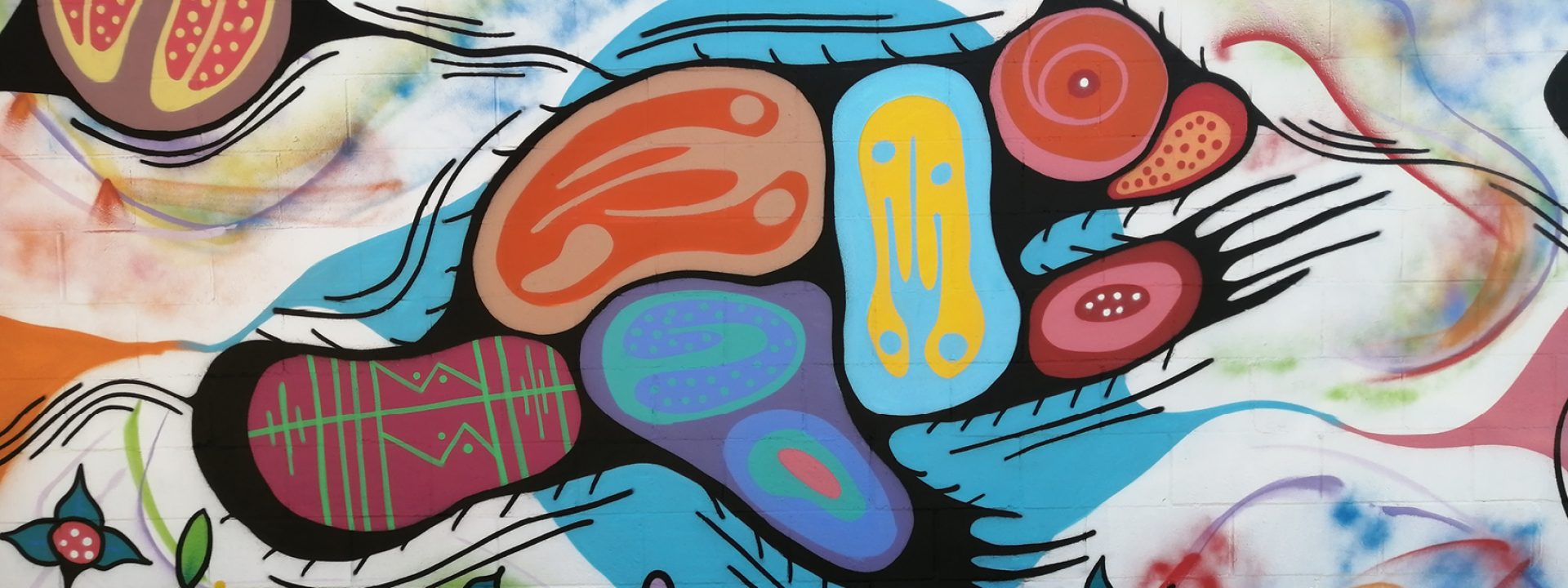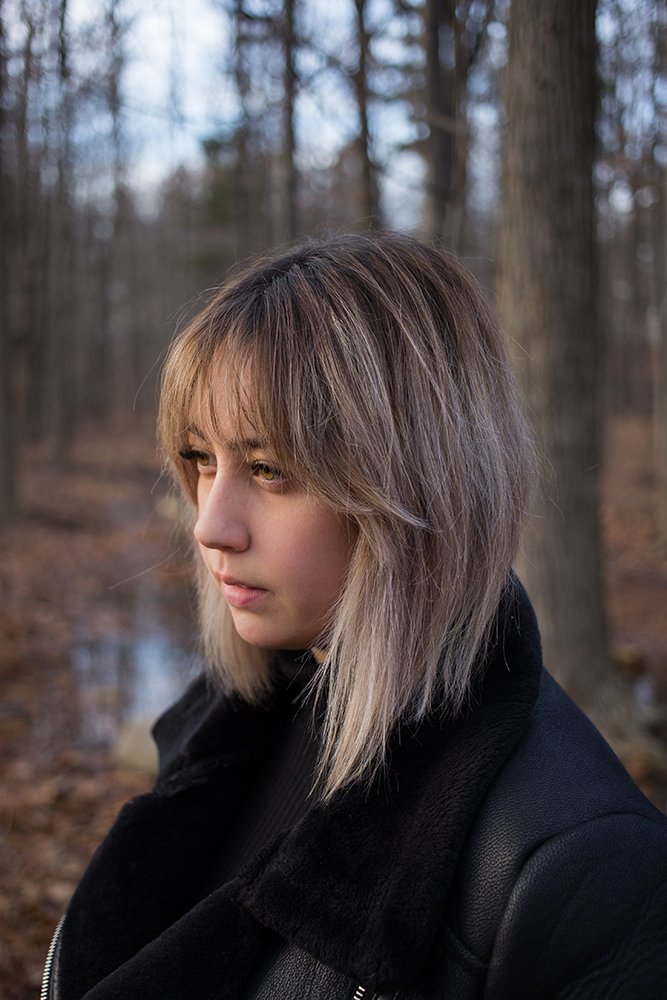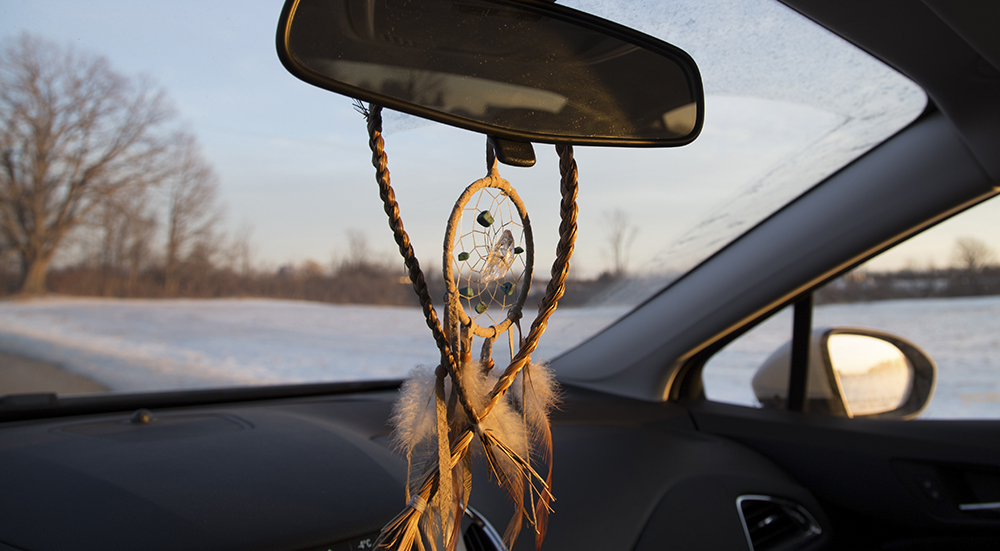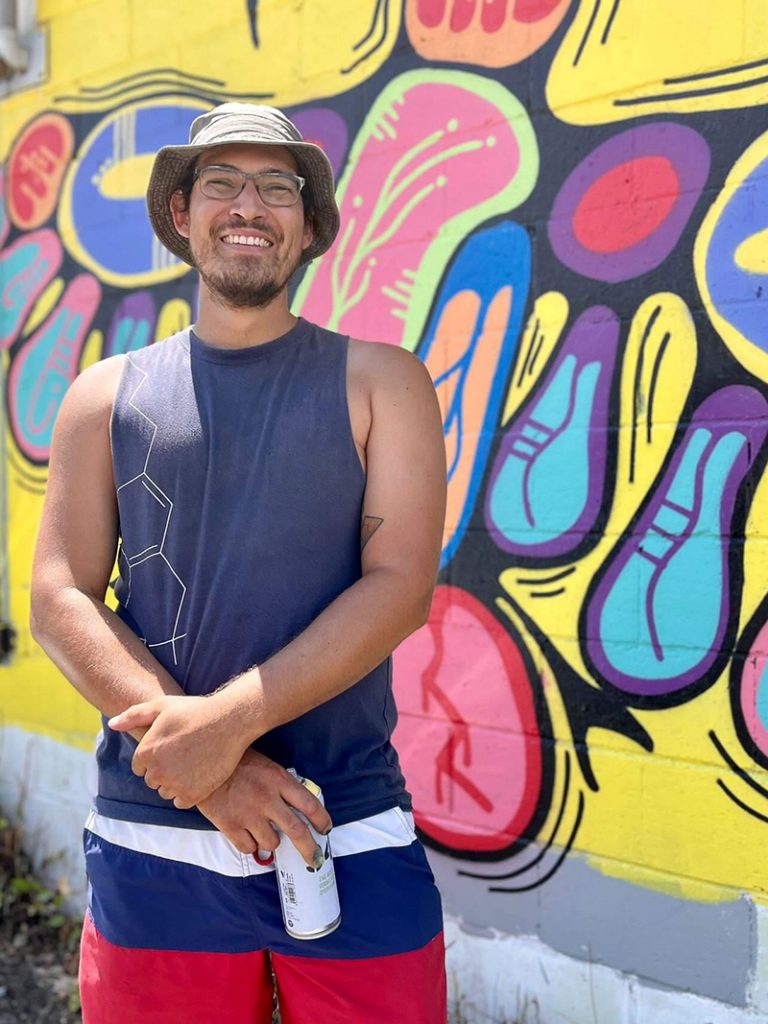Back to their Roots

Local artists Alex Jacobs-Blum and Kyle Joedicke are reclaiming their Indigenous past while carving out space for a bright future.
The land acknowledgements that have become commonplace at our civic gatherings are often inadequate gestures to the First Nations history overwritten by colonial settlement. Vague statements of poorly pronounced territorial names can too often consign these cultures to an equally vague past that fails to see Indigenous lives in our today, or tomorrow.
Artists Alex Jacobs-Blum and Kyle Joedicke have both struggled against this landslide of obscured history to reclaim their Cayuga traditions from the tangled roots of their mixed European ancestry. Within this work of carving out vital space for Indigenous visibility in our city is a vital drive to make these ideas sing for the future.

Jacobs-Blum is a photographer whose conceptual lens follows in the wake of First Nations photographers like Jeff Thomas and Shelley Niro. These exemplars went unmentioned in her classrooms at Sheridan College, which offered strong technical training but limited scope for navigating her growing awareness of the intergenerational trauma that persisted in her family.
A road trip to her ancestral Cayuga lands in upstate New York opened a process of “coming home to myself” through photographs that capture isolated vignettes largely glimpsed from a car’s alienating distance. These works were recently exhibited in Sense of Belonging: A Place Called Home at the Woodlands Cultural Centre, a site weighted with its origins as a residential school. Jacobs-Blum’s photographs layer themselves upon the ghosts that haunt colonized spaces, bridging scenes of natural wilderness with neglected infrastructure and weather-worn historical plaques marking the burial mounds of Cayuga culture and lives.
Jacobs-Blum defies these signs that insist on confining her identity in a dusty past. As the inaugural Indigenous curatorial resident at Hamilton Artists Inc., she has been researching Indigenous futurism through the practices of artists that carry their ancestry and kinship through time and space to imagine fantastic possibilities. These ideas are threaded through Born Celestial, an exhibition she organized this summer at the Inc. that reclaimed the white cube of the gallery space for Indigenous women’s visions of eclectic, sparkling futures.
Survival in the face of ecological tragedies like the disastrous sewage spill into Cootes Paradise also informs Jacobs-Blum’s first foray into sculpture for this year’s revival of Urban Moorings, a floating exhibition on those same waters that was first curated by Nora Hutchinson in 2008. Inspired by the Haudenosaunee creation story, a large dome representative of Mother Earth floats alongside platforms planted by the Royal Botanical Gardens with native species to clear toxins from the water. An augmented reality component to this work, also a new horizon for Jacobs-Blum, incorporates Sky World imagery that situates this spoiled paradise within its larger cosmic realm. The result is a forward-thinking call for care and stewardship, floating in a site of wounded depths.
Urban Moorings Two runs until Nov. 1 in the lower Chedoke Creek watershed. Accesses include include Princess Point and the Desjardins Trail.

An artist of ambitious ideas, Jacobs-Blum is an active collaborator both within and beyond the realm of art. Working with the Bawaadan Collective, an Indigenous film collaborative, has encouraged Jacobs-Blum to push her lens-based storytelling into the realm of moving images. She also organized a youth video series with the Hamilton Regional Indian Centre that is screening during this year’s Supercrawl – a project that, like much of her practice as a curator and community advocate, holds space for First Nations presence in the urban complications of the downtown core.
Kyle Joedicke turns instead to spray cans and paint brushes to inscribe Indigenous stories on a growing number of walls in and beyond Hamilton. We met at the site of his largest project to date – a frieze that stretches the full depth of a Concession Street storefront and wraps around its back door. A path marked on the ground, as well as the wall, traces a youth’s encounters with seven animals representing the Seven Grandfather Teachings, painted in the Woodlands style immortalized by Norval Morrisseau but layered with uninhibited spray marks that recall Joedicke’s roots in graffiti’s street culture.

Photo: submitted
This mural, commissioned last year by the Concession Street BIA, was created over two months in between dispiriting day shifts in the home development industry picking garbage out of the mud of what used to be untouched wilderness. Completing this work opened a promising door out of that job: a CBC article on the new mural exploded his Instagram following overnight, leading to many new commissions, gallery representation with Beckett Fine Arts, and participation in this year’s Concrete Canvas mural festival.
A lifelong self-described doodler who grew up in Caledonia, Joedicke was active in street art as a teenager and well into his 20s, until the toxic culture of competition drove him towards other creative outlets. He moved through tattoo design and other practices in search of a voice that would reflect his identity as an artist of mixed Cayuga and Scottish descent who, despite countless weekends with his “second family” on Six Nations, feels the absence of the teachings his work now seeks to share.
As a self-taught artist, Joedicke is navigating his painting practice with a modest sensitivity to what he doesn’t yet know and an infectious appetite for Indigenous legends that can speak to contemporary challenges. The parable of an evil serpent that plagues a village and is defeated through wisdom and collective effort resonates powerfully with the social failings he has witnessed in the present: income inequality, unaffordable housing, the fragility of social ties in alienating urban spaces.
Despite this critical eye, Joedicke insists on a world marked by lively forms and bright yellows that, for him, signify “the light of the sun or the act of turning a new leaf.” His is the optimism of an artist rising to heights that had never before seemed possible.
Equally important is the impact of his public murals for an urban Indigenous community that is now seeing their culture writ large on Hamilton’s walls. A renewed sense of belonging flows from these bold interpretations of the stories that were first spoken on this land and will persist long into the future.







